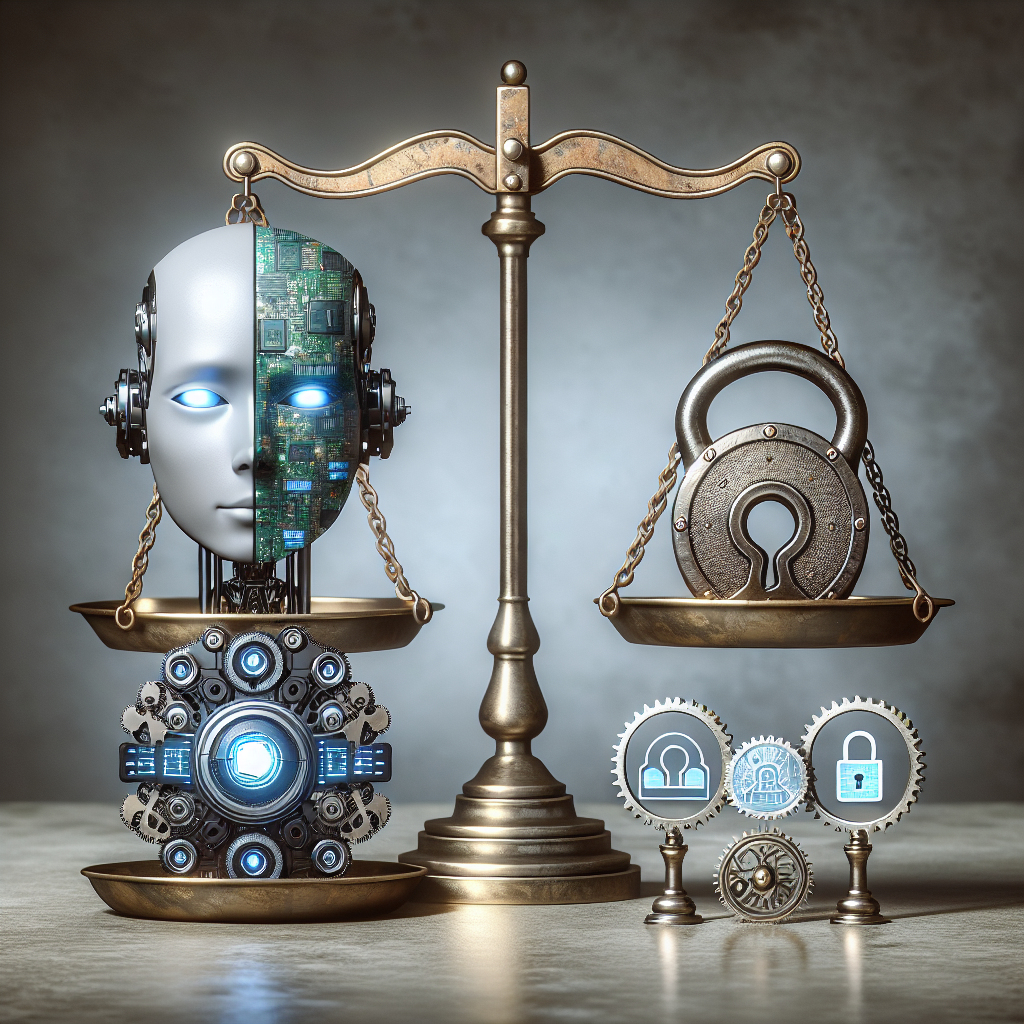Artificial intelligence (AI) has rapidly advanced in recent years, transforming various industries and revolutionizing the way we live and work. However, along with these advancements come challenges in regulating AI to protect privacy rights. As AI systems become more sophisticated and pervasive, it is crucial to establish safeguards to ensure that individuals’ privacy rights are not compromised.
One of the main challenges in regulating AI to protect privacy rights is the lack of clear guidelines and regulations. The rapid pace of AI development has outpaced the ability of lawmakers to keep up with the technology. This has led to a regulatory environment that is fragmented and inconsistent, making it difficult to enforce privacy protections effectively.
Another challenge is the complexity of AI systems. AI algorithms are often opaque and difficult to understand, making it challenging to assess how they collect and use personal data. This opacity can lead to privacy violations, as individuals may not be aware of how their data is being used and may not have control over how it is shared.
Furthermore, the use of AI in surveillance and monitoring poses a significant threat to privacy rights. AI-powered surveillance systems can track individuals’ movements, behavior, and activities in real-time, raising concerns about mass surveillance and the potential for abuse of power by governments and corporations.
In addition, the use of AI in decision-making processes, such as hiring, lending, and criminal justice, raises concerns about bias and discrimination. AI algorithms can reflect and perpetuate existing biases in data, leading to unfair outcomes for certain groups of individuals. This can have serious consequences for individuals’ privacy rights and can exacerbate existing inequalities in society.
To address these challenges, policymakers must take a proactive approach to regulating AI to protect privacy rights. This includes developing clear and consistent regulations that govern the use of AI systems, ensuring transparency and accountability in AI algorithms, and establishing mechanisms for oversight and enforcement.
One approach to regulating AI to protect privacy rights is to implement privacy-by-design principles. This involves incorporating privacy protections into the design and development of AI systems from the outset, rather than as an afterthought. By building privacy safeguards into AI systems, developers can ensure that data is collected and used responsibly and that individuals have control over their personal information.
Another approach is to establish data protection laws that govern the collection, use, and sharing of personal data by AI systems. These laws can provide individuals with rights to access, correct, and delete their data, as well as require organizations to obtain consent before collecting and using personal information. By establishing clear rules for data protection, policymakers can help ensure that individuals’ privacy rights are respected in the age of AI.
Furthermore, policymakers can encourage the development of ethical guidelines and standards for AI systems. These guidelines can help organizations and developers navigate the ethical challenges of AI, such as bias, discrimination, and accountability. By promoting ethical AI practices, policymakers can help ensure that AI systems are used in a responsible and fair manner that respects individuals’ privacy rights.
In addition to regulatory measures, education and awareness are essential for protecting privacy rights in the age of AI. Individuals must be informed about how AI systems collect and use their data and what rights they have to control their personal information. By empowering individuals with knowledge about AI and privacy, policymakers can help ensure that individuals are able to make informed choices about how their data is used.
Overall, regulating AI to protect privacy rights is a complex and multifaceted challenge that requires a coordinated and proactive approach from policymakers, developers, and individuals. By establishing clear regulations, promoting ethical practices, and empowering individuals with knowledge, we can help ensure that AI systems respect and protect individuals’ privacy rights in the digital age.
FAQs:
Q: What are some examples of AI systems that raise privacy concerns?
A: AI systems that raise privacy concerns include surveillance systems that track individuals’ movements and activities, decision-making algorithms that rely on personal data, and chatbots that collect sensitive information from users.
Q: How can individuals protect their privacy rights in the age of AI?
A: Individuals can protect their privacy rights by being informed about how AI systems collect and use their data, by exercising their rights to access and control their personal information, and by advocating for stronger privacy protections from policymakers.
Q: How can policymakers regulate AI to protect privacy rights effectively?
A: Policymakers can regulate AI to protect privacy rights effectively by developing clear and consistent regulations, promoting privacy-by-design principles, establishing data protection laws, encouraging ethical practices, and empowering individuals with knowledge about AI and privacy.
Q: What are some potential consequences of failing to regulate AI to protect privacy rights?
A: Failing to regulate AI to protect privacy rights can lead to privacy violations, data breaches, discrimination, bias, and abuse of power. It can also erode trust in AI systems and hinder the responsible and ethical use of AI in society.

